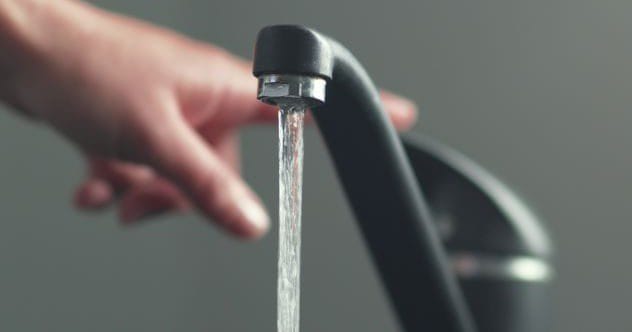Water is essential for life. We need it for everything from brushing our teeth to growing our food. While some water usage statistics are easy to understand, others are truly shocking. Here are ten surprising facts about how we use and sometimes waste water.
One Farming Family Uses More Water Than All of Las Vegas
Farms need water to grow crops, which is understandable. However, a 2022 investigation revealed that a single farming family used more water than the entire city of Las Vegas. The Abbati family’s farmland consumed 260,000 acre-feet of water, while Las Vegas used about 200,000 acre-feet. That’s a staggering difference! One acre-foot equals about 326,000 gallons.
It Takes One Gallon of Water to Produce a Single Almond
Almonds are a popular snack, but growing them requires a lot of water. A single almond needs just over one gallon of water to grow. Some studies even suggest it could be as high as 3 gallons per almond! The total amount of water California uses to grow almonds for export could supply Los Angeles with water for three years. Almond growers use almost 10% of California’s water each year, contributing to water scarcity in the state.
Golf Courses Use Billions of Gallons of Water Per Day
Golf courses require a lot of water to maintain their lush green grass. With almost 40,000 golf courses in 206 countries, the water usage adds up quickly. It’s estimated that golf courses worldwide use 2 billion gallons of water per day. This is a significant amount of water for a sport, especially when many regions face water shortages.
One Pound of Beef Requires 1,799 Gallons of Water
Producing beef has a significant water footprint. On average, one pound of steak requires 1,799 gallons of water. Most of this water (98%) is used to water the grass, forage, and feed that cattle consume over their lifetime. The large amount of water used for meat production raises questions about the sustainability of meat-heavy diets and has sparked interest in more water-efficient meat production methods.
Most Water in Homes Goes Down the Drain
A significant amount of water we use in our homes is simply wasted. It’s estimated that 95% of the water that enters our homes goes down the drain. In some advanced countries, much of this water is recycled. For example, Israel recycles up to 80% of its sewage for irrigation. However, many developing countries lack the technology to recycle water, exacerbating freshwater shortages.
Americans Drink More Than One Billion Glasses of Tap Water a Day
Water is vital for our health. The human body is about 66% water, and the brain is 75% water. In the United States, tap water is generally safe to drink, thanks to the Safe Drinking Water Act. As a result, Americans consume more than one billion glasses of tap water each day. However, the consumption of bottled water is even higher, exceeding five times this amount.
It Takes 37 Gallons of Water to Make a Roll of Toilet Paper
The production of toilet paper requires a surprising amount of water. It takes 37 gallons of water to make a single roll. Additionally, each roll requires 1.3 kilowatt/hours of electricity and 1.5 pounds of wood. Americans consume about 34 million rolls of toilet paper per day, totaling 36.5 billion rolls annually. This means that American toilet paper consumption requires about 473,587,500,000 gallons of water each year!
Global Fresh Water Demand Will Outstrip Supply by 2030
Experts predict that global freshwater demand will exceed supply by 2030. This is due to the unsustainable exploitation of freshwater resources, particularly in developing countries where water recycling is limited. To avoid this crisis, governments need to address misdirected agricultural subsidies, mining permits that waste water, and billions of gallons lost daily through leakages and poor water piping systems.
Starbucks Used to Waste Six Million Gallons of Water a Day
In 2008, it was discovered that Starbucks had a policy of keeping a sink running non-stop in its coffeehouses to wash cups and plates, under the belief that it would prevent germ formation. This “dipper well” policy wasted an estimated 6 million gallons of water per day worldwide. This amount of water could meet the needs of a small nation. Following criticism from environmental groups, Starbucks discontinued this wasteful practice.
Reverse Osmosis Systems Waste Gallons of Water
Reverse osmosis (RO) systems are used to filter water and remove contaminants. However, these systems also generate a significant amount of waste. A typical RO system produces 5 gallons of wastewater for every gallon of clean water. While RO systems effectively remove contaminants like lead, bacteria, and viruses, their inefficiency raises concerns about water conservation.
These shocking water usage statistics highlight the urgent need for greater awareness and conservation efforts. From agriculture to everyday habits, we all have a role to play in preserving this precious resource.
What do you think about these stats? Share your thoughts and water-saving tips in the comments below!










